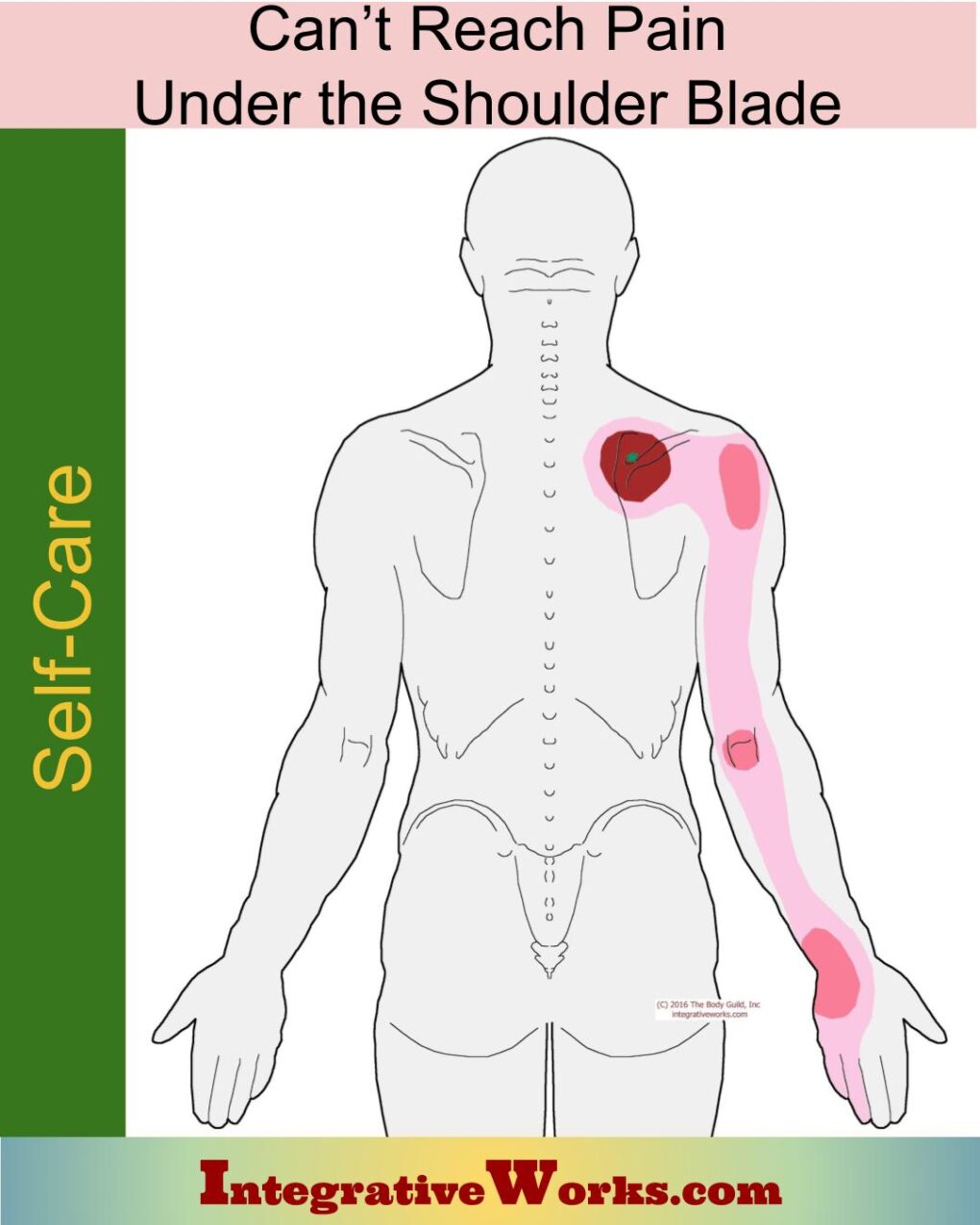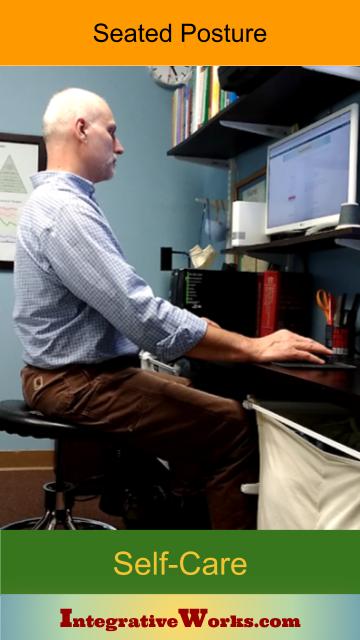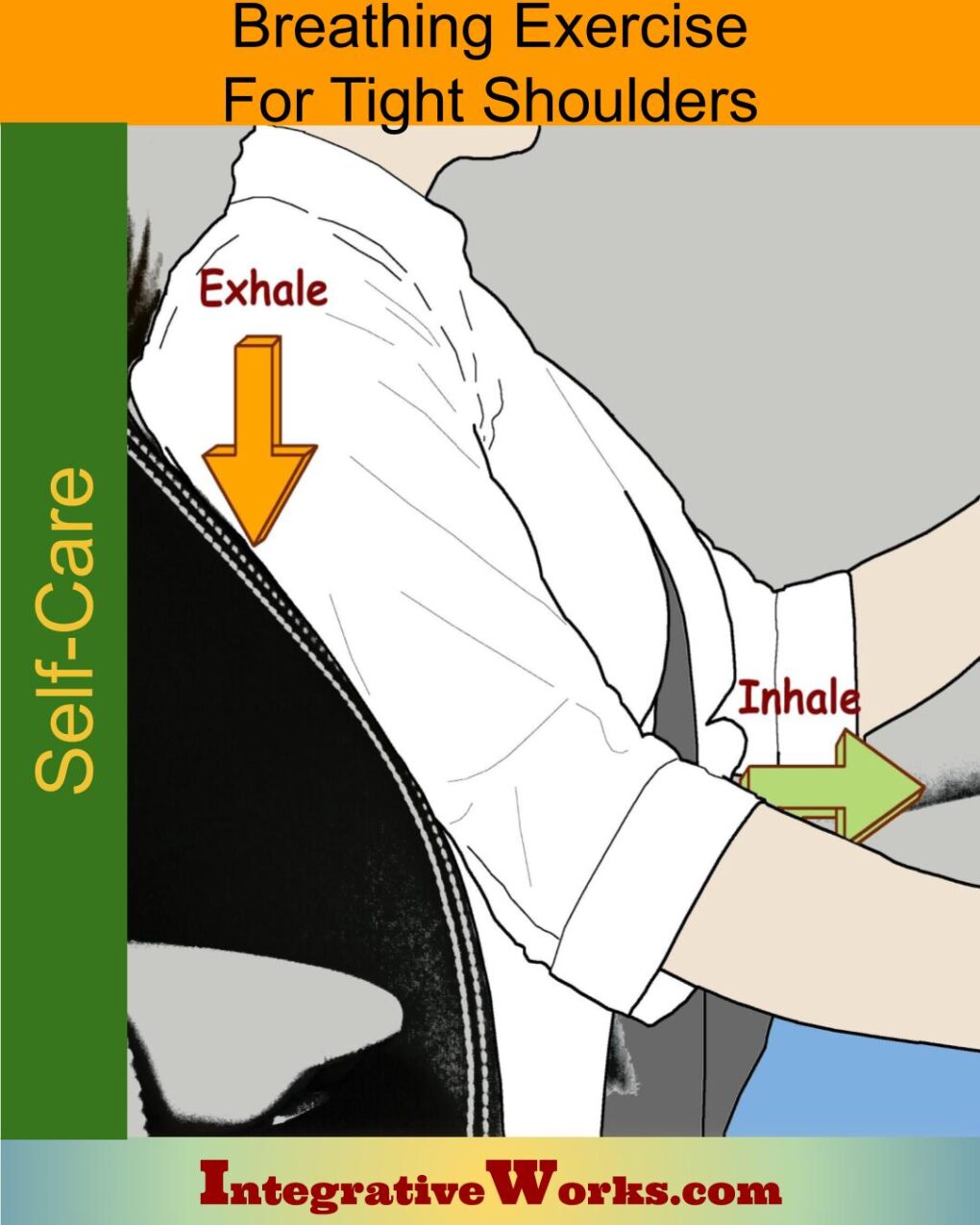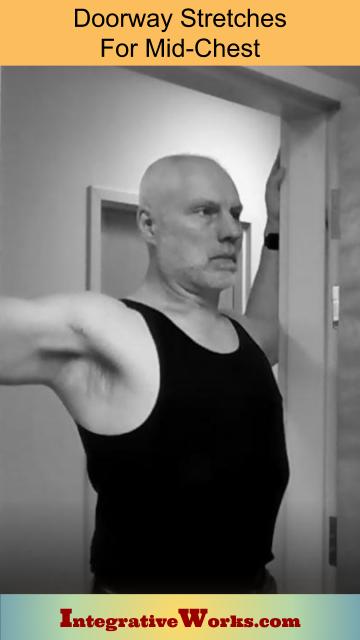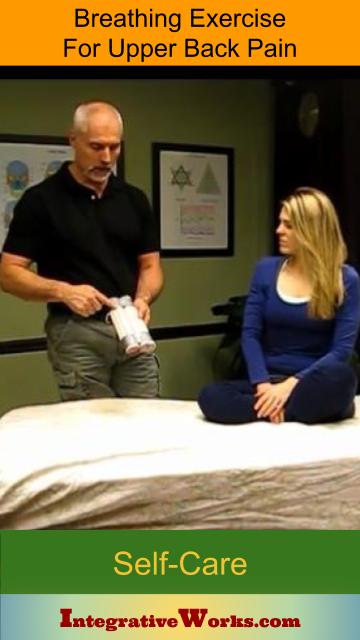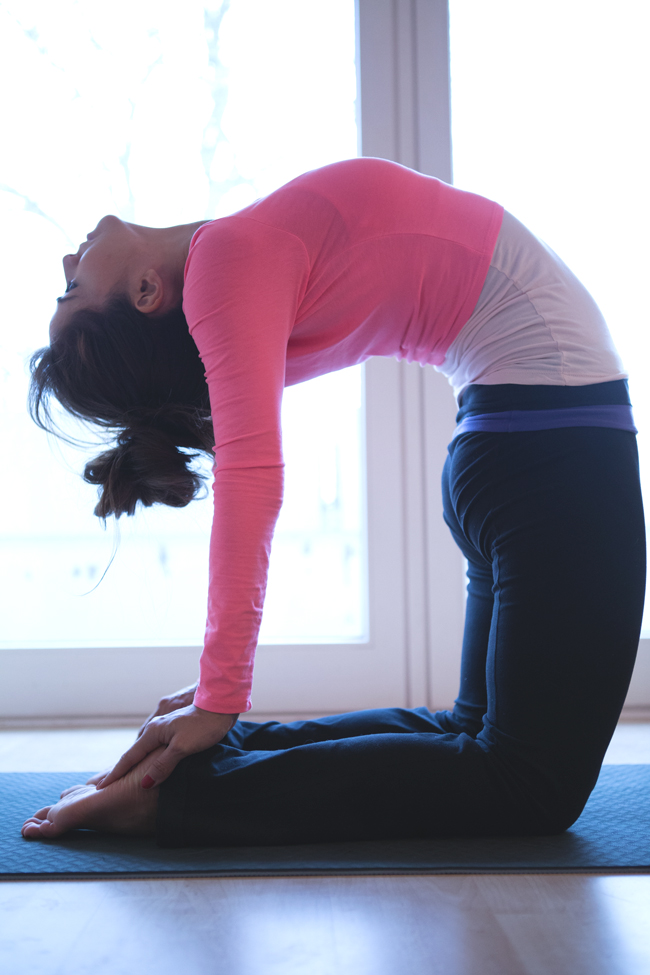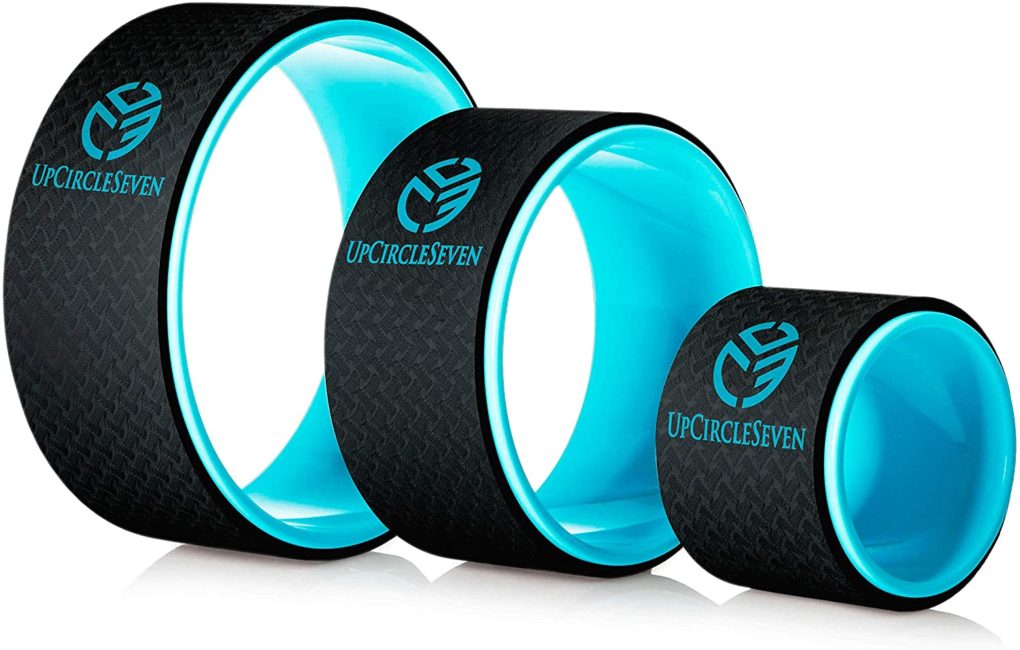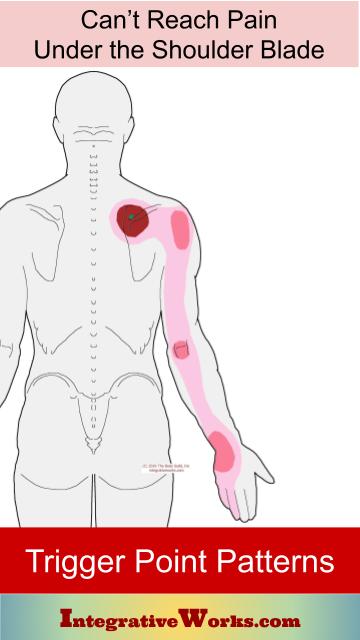Table of Contents
- Activities to Avoid or Change
- For Temporary Relief
- Stretches and Exercises for Longer-Lasting Relief
- Yoga Corner
This post offers strategies for relief when you can’t reach that pain under your shoulder blade. Learn more about how people describe, activate, and perpetuate the pain by looking at this other post.
Typically, people ignore this pain that they can’t reach under the shoulder blade until it becomes chronic. At that point, these trigger points are stubborn and require a little regular self-care for lasting changes. That almost always means some changes in activities. Also, stretching and exercises are needed to free the tight joints and muscles.
Activities To Avoid or Change:
This is usually a problem in today’s culture with being chronically bent forward while working on paperwork or with a screen. One of my clients also got this from knitting while her family watched TV at night.
This post offers a couple of different approaches to being seated without pain, one for the more active person and one for the person that needs more support. It also has a few accessories to help support you.
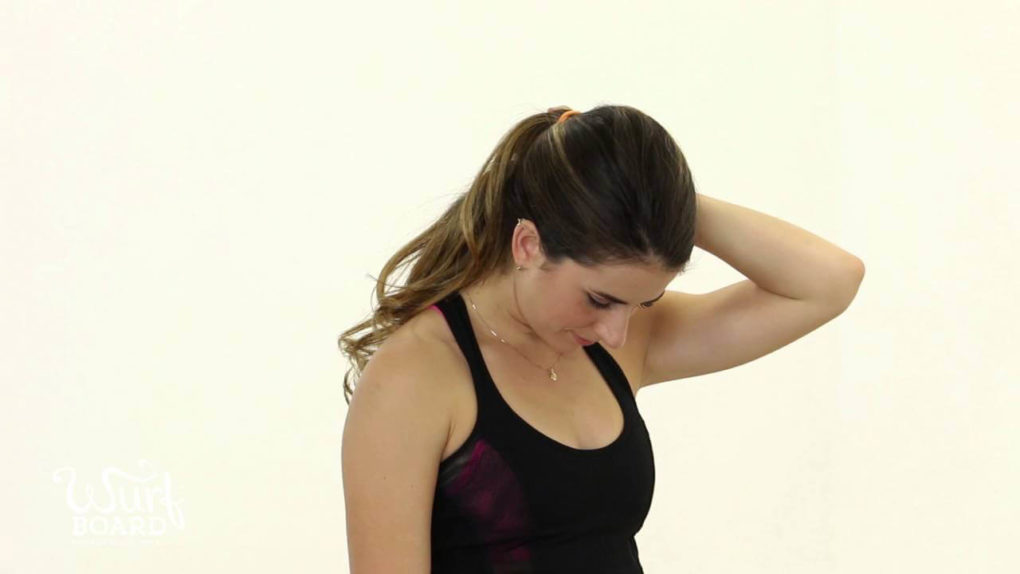
Stop stretching your head forward.
I know that it feels good, but the relief is temporary, making this problem worse in the long run.
Don’t dig into the spine and shoulder blade area by laying on a ball. It feels good and sometimes gives some relief, but I’ve had several clients create worse problems by jamming rib heads and vertebrae. One client was lying on a big vibrating massager and ruptured a disc.
Instead, use the exercises or yoga wheel that I discuss below. Those approaches will loosen them more evenly. They require a little more patience but are less likely to aggravate the area.
For Temporary Relief:
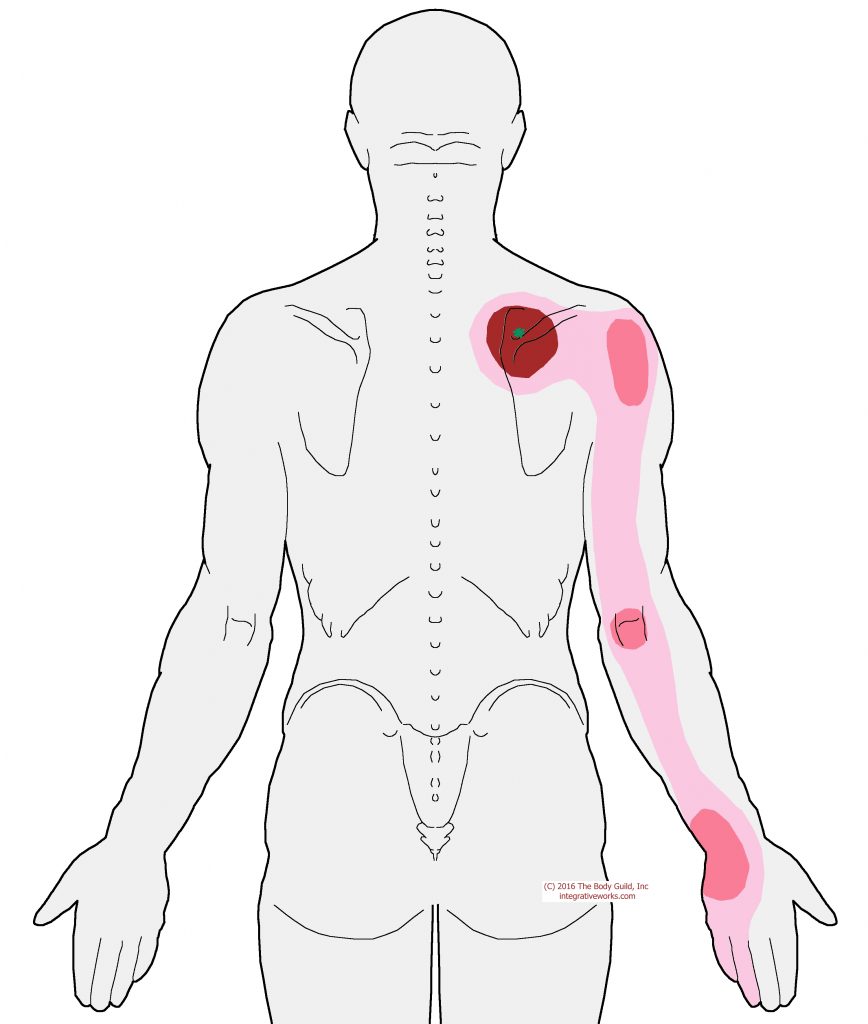
A topical pain patch like IcyHot or Salon Pas on the green asterisk can offer relief and is often unexpectedly energizing. However, people seldom get how draining constant pain can be.
Place the patch to cover from the base of the neck to the top corner of the shoulder blade. Again, the placement doesn’t have to be perfect.
If it’s hard to keep one on because the clothes rub it, or you’re wearing a top showing the patch, use some cream. It doesn’t last as long, and some folks are bothered by the smell, but it’ll help.
Breathing to Relax Shoulders
The exercise in this post is really great for releasing tension in the head, neck, and upper back. It is particularly good at strengthening the muscles that lower shoulders and releasing the muscles that keep them high and tight.
These self-care activities, like over-the-counter drugs, are not intended to replace appropriate medical attention. If you have concerns about these self-care activities, get help from a professional. Use these suggestions and strategies with discretion and at your own risk. See your doctor when your pain is severe, persistent, or not responding to these simple suggestions.
Stretches and Exercises for Longer-Lasting Relief:
Doorway stretches are easy and convenient. They offer some immediate relief and can make changes. In a few days, those changes can create notable, lasting relief. Take the time to do them for just a few minutes several times a day. They help to rebalance the shoulder girdle so that this pain under the shoulder blade gets longer-lasting relief.
This post has a breathing exercise to help retrain your posture to be upright.
It also links to Amazon to get a set of yoga wheels, which are more aggressive but make faster changes. They can be great for popping those joints loose in your back.
Do You Have Forward-Head Posture?
This muscle is often overstretched and overpowered by Forward-Head Posture. As the head moves forward, the opposing muscles become short and strong. Consequently, this muscle becomes overstretched and tight. Once the head has become imbalanced over the torso, this muscle fights to rebalance posture.
If you have Forward-Head Posture, review this collection, especially the self-care suggestions for changing your environment and the Tuck, Tilt, Turn, and Lift exercise.

Build your extrinsic back muscles. This means that you should do exercises that drive your elbow up and back—shoulder presses, upright rows, posterior flys, etc. Start with moderate work every other day. After about three weeks, you can go up in weight and intensity.
Do you use an elliptical trainer? You can help by keeping your head back, your chin down, and slightly exaggerating the shoulder movement as you move your arms front to back.
I’d love your feedback on how this works for you and any suggestions you might have.
Email me at integrativeworks@gmail.com.
Yoga Corner
If you’re a yoga practitioner, focus on those chest openers, like camel pose and backbends. Observe the tension in the base of your neck as you take your head back. Watch how many people miss this critical part of opening their shoulders.
This pain under the shoulder blade releases when the pecs open and the upper rib heads mobilize. A little clicking in your upper back might offer some lasting relief. Check out a set of yoga wheels like the ones shown below.
This three-pack of yoga wheels helps to mobilize and reshape your spine. I use a 3-pack like this regularly to loosen my back. I use them all but prefer the small wheel. It has more focused pressure.
I have a set of three and have loaned them to many clients for a week. They almost always order a set for themselves. With regular use, I can see a real difference in the curve of their spine. They have played with different models and, in general, prefer the ones with deeper padding.
You can find yoga wheels on Amazon. This one has an excellent rating, but you may want one that is a bit more narrow. Get the ones that work best for your body.
Other trigger point patterns
have similar areas of referral and impaired activities.
Check out these other posts for pain around the shoulder blade.
Support Integrative Works to
stay independent
and produce great content.
You can subscribe to our community on Patreon. You will get links to free content and access to exclusive content not seen on this site. In addition, we will be posting anatomy illustrations, treatment notes, and sections from our manuals not found on this site. Thank you so much for being so supportive.
Cranio Cradle Cup
This mug has classic, colorful illustrations of the craniosacral system and vault hold #3. It makes a great gift and conversation piece.
Tony Preston has a practice in Atlanta, Georgia, where he sees clients. He has written materials and instructed classes since the mid-90s. This includes anatomy, trigger points, cranial, and neuromuscular.
Question? Comment? Typo?
integrativeworks@gmail.com
Interested in a session with Tony?
Call 404-226-1363
Follow us on Instagram

*This site is undergoing significant changes. We are reformatting and expanding the posts to make them easier to read. The result will also be more accessible and include more patterns with better self-care. Meanwhile, there may be formatting, content presentation, and readability inconsistencies. Until we get older posts updated, please excuse our mess.

